Social Commerce: How to Sell on Social Media in 2024
Come across social commerce and its sales-driven approaches.
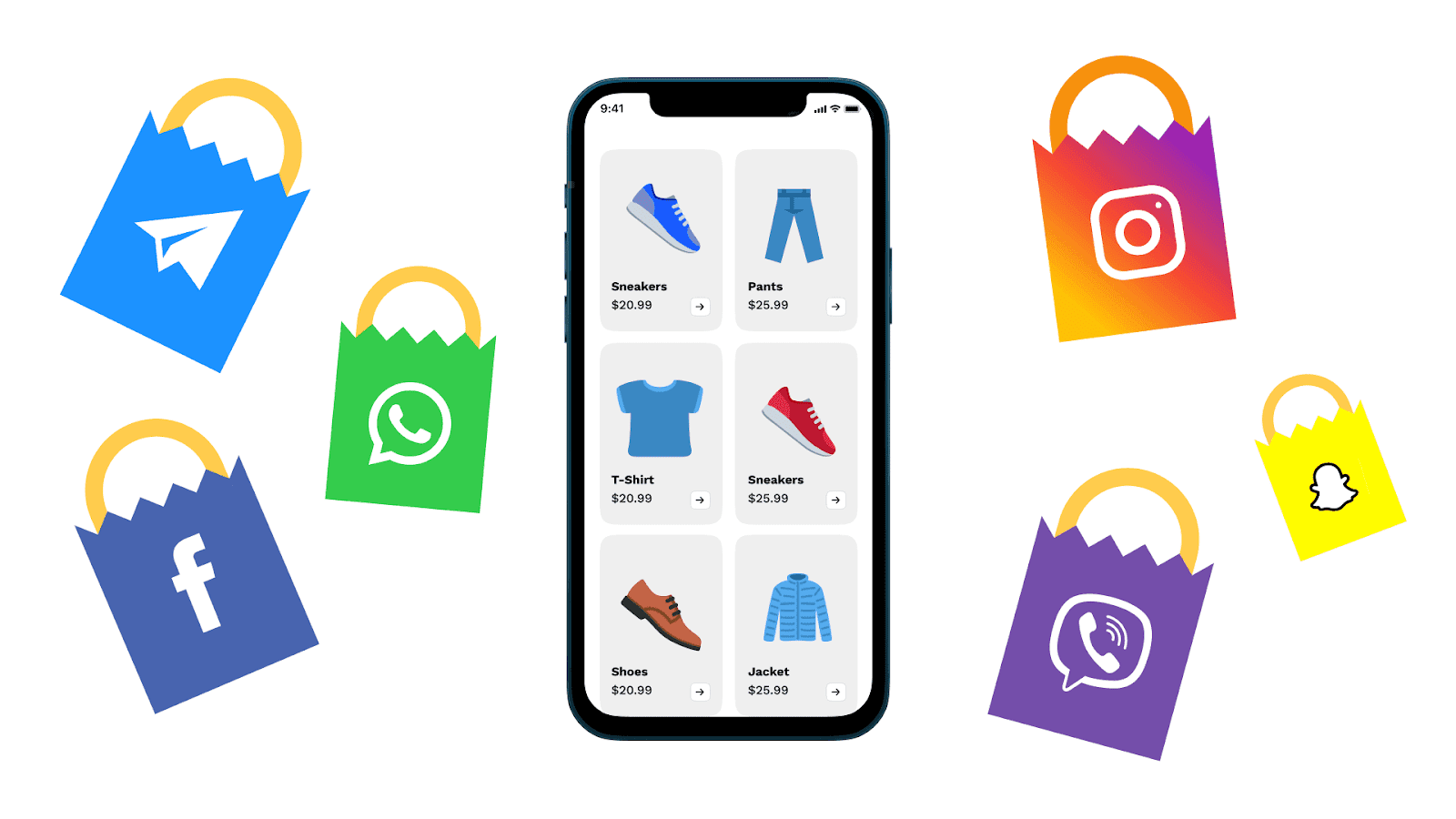
The importance of social media in our everyday life can hardly be overestimated and the same goes for selling via these platforms for companies. Even if you’re not an avid follower of Instagram stars or a TikTok creator yourself, there are so many things happening on social media, directly or indirectly related to our friends, job, and society, that we have to regularly interact with these platforms.
Just as social media provides extensive tools for creating content and staying in touch with other people, it also provides brands with features that enable new approaches to selling and marketing their products. Called social commerce, this activity is gaining increased popularity, while social media platforms are increasing their audiences as well. McKinsey & Company estimates the volume of retail social commerce sales in the US to reach almost $80 billion by 2025.
Successful examples of Kylie Cosmetics, which allows followers to shop products directly from its TikTok videos, Dollar Shave Club, which leverages social proof via posting customers’ feedback on Pinterest, and Havaianas, which create beautiful and shoppable Instagram feeds clearly demonstrate the power of social commerce in the today’s retail landscape. For brands, it is important to gain a comprehensive understanding of their target audience’s shopping preferences and use these insights to develop and fine-tune social commerce tactics for reaching out to new customers and maintaining strong relations with existing ones. Let’s take a deep dive into the world of social commerce to see what trends, platforms, and strategies shape the world of social media selling today.

Table of contents
What is social commerce or selling?
Social commerce is the practice of marketing and selling products and services via social media platforms. With social commerce, businesses provide ways for customers to make purchases directly in social media apps that they use to connect with friends and discover various content.Social selling via Facebook, Instagram, and other platforms uses them as virtual shops for brands and their offerings. It eliminates the need for followers to switch from a social media app to the brand’s website, making the customer journey from discovery to purchase more streamlined, comfortable, and optimized.
Social commerce provides brands with new opportunities to engage with customers, extend their audiences, and, consequently, improve sales. Meanwhile, such a way of interaction also benefits shoppers who can easily discover brand offerings, shop products in a familiar environment of a social media app, as well as connect with customer support to discuss issues or receive shopping guidance.
Social commerce vs. e-commerce: the difference
Generally speaking, social commerce can be regarded as a part of e-commerce, which covers all activities of selling products online. E-commerce comes in four main types: business-to-business (B2B), business-to-consumer (B2C), consumer-to-business (C2B), and consumer-to-consumer (C2C).
The main difference between traditional B2B and B2C e-commerce, when buyers make purchases at sellers’ websites and platforms, is that with social commerce, everything happens within social media and messengers where shoppers initially discover the products. Here, five main types of tech solutions for social selling can be identified: native shopping solutions, p2p marketplaces, shoppable AR filters and masks, live shopping events, and curated shopping lists.
Benefits of social commerce for business
Selling through social media provides numerous advantages for businesses. Among them:
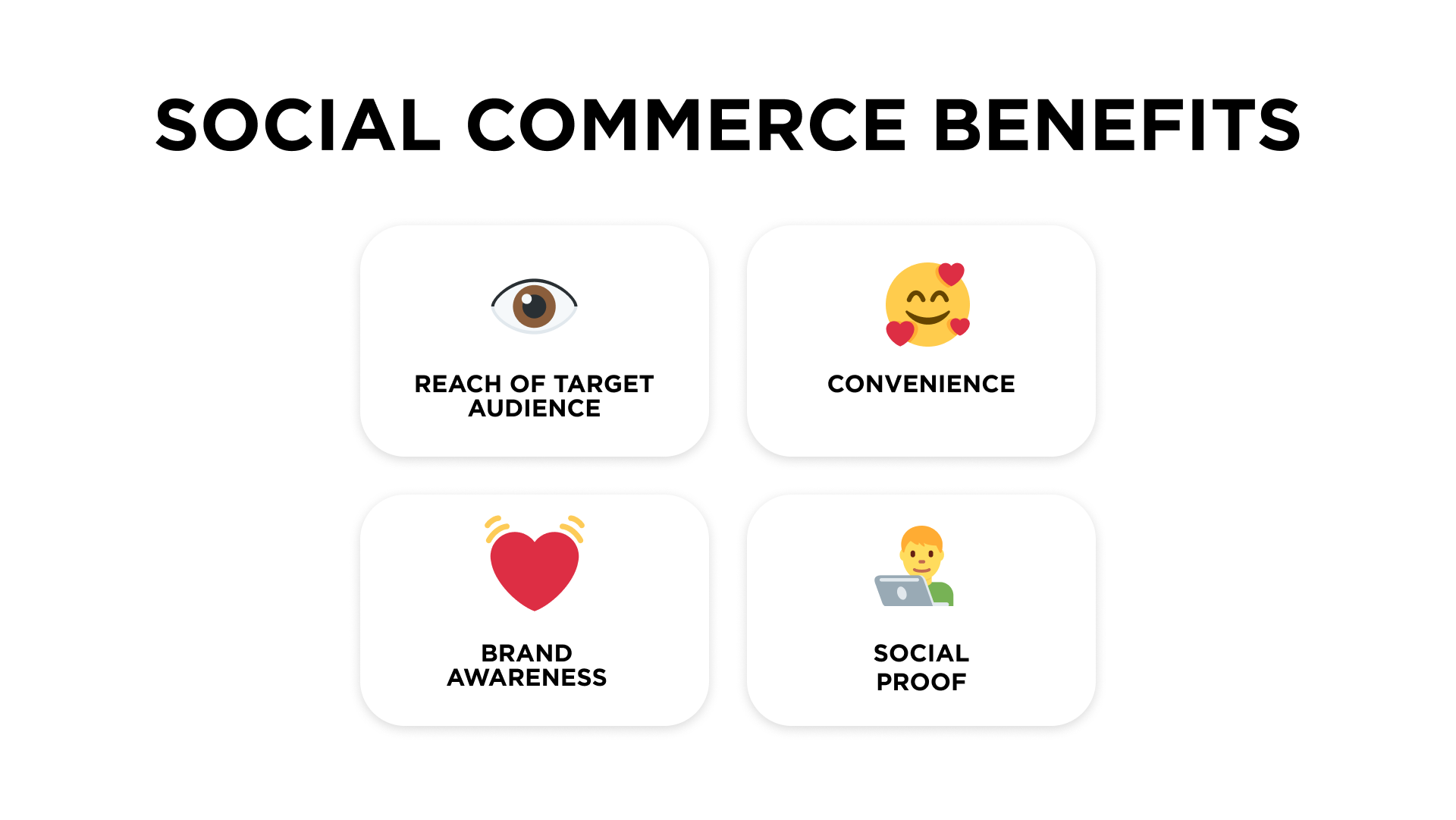
- Better reach of target audience. Social commerce is one of the best tools for businesses to extend their reach and help more people to discover the brand and its offerings. Instagram, Facebook, and other platforms are universally used and popular all over the globe. This allows companies to extend their reach to distant markets and find loyal customers all over the world.
- Increased brand awareness. Social media is hardly imaginable without standout personalities and celebrities. Opinions of these people, also called influencers, can take a brand’s popularity to a new level, on the contrary, make customers turn away. Partnering with influencers relevant to the target audience can immensely help a brand in improving customer awareness.
- Convenience for shoppers. Shopping through a familiar interface of a social media platform that you use every day. What can be better? The convenience provided by social commerce directly drives the number and frequency of purchases since the customer journey gets shorter and more straightforward.
- Social proof. User-generated content, such as reviews, feedback, stories with brand mentions, or posts with a photo of a product on social media — all of this works toward establishing trust among customers. Since people today are more skeptical of advertising than several decades ago, such unbiased promotion feels much more natural and trustworthy than paid commercials of any format.
Top platforms for social selling in 2024
Let’s take a close look at some of the most popular and prospective platforms for companies to direct their social selling efforts at.
Social commerce on Instagram
Undoubtedly, Instagram is one of the most promising social commerce platforms on the market. The social media platform’s key benefit is presenting products and services in an appealing way via eye-catching photos and videos in posts, stories, and reels. By setting up Instagram Shopping, brands can take customers straight from product discovery to purchase seamlessly. The shop feature in the Instagram account allows brands to tag items in posts, stories, and even live broadcasts, and followers to view and buy items in a way similar to an e-store. Customers can make purchases via Instagram Direct Messages, where they can also ask questions and track their orders.
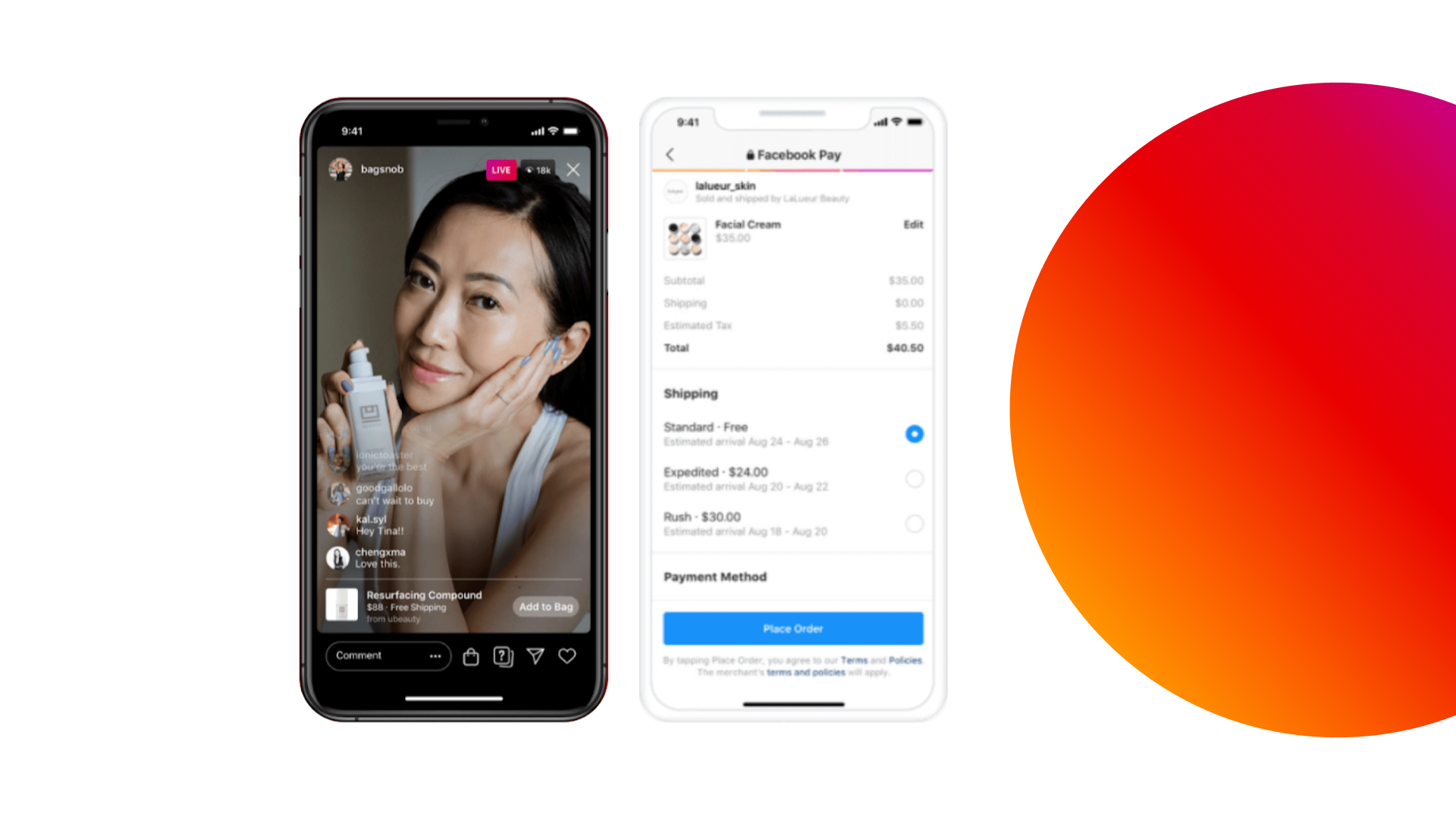
Social commerce on Facebook
Facebook, which has nearly 3.5 billion active users worldwide, is one of the key social commerce platforms. Facebook Shops, the social media’s commerce service, has an extremely low barrier to entry. A company with a business account can have an unlimited number of Facebook Shops that are fully customized online storefronts with product catalogs. Brands can also use integration with Shopify to automatically sync products with Facebook Shop and create shoppable posts and ads. Instagram Shopping is also directly linked to Facebook Shops, providing a seamless experience for shoppers. They can do an in-app checkout or open a Messenger conversation to make a purchase.
Social commerce on WhatsApp
The most popular messaging platform is emerging as a significant tool for driving sales, marketing, and customer support for enterprises. There are two types of WhatsApp Business accounts: an Official Business Account, which has a green checkmark badge and is allowed for well-known and trustworthy brands, and a Business Account, which can be created by any person who needs a business account on the platform.

WhatsApp Business allows a brand to add items to the catalog and display them in a chat with price, description, and product code. Since WhatsApp is a powerful tool for communication that combines automation capabilities with integration support for CRM systems, creating a WhatsApp shop is a great way for businesses to expand their reach and allow customers to shop right through a chat window where they get shopping assistance.
Social commerce on TikTok
With an active user base of over one billion people, TikTok maintains a strong position among the top social media platforms. This, together with TikTok's shopping features, make the social media an effective platform to showcase products and guide users to make purchases within the app. A consistent posting of high-quality unique content aligned with TikTok trends can build customer trust and provide insights into younger consumer preferences within the 18-29 age bracket.
Social commerce on Discord
Discord, a text chat app widely used by students and gamers, not only serves as a platform for social interaction but also offers unique marketing opportunities for businesses. It enables the creation of communities and facilitates real-time customer communication through dedicated channels. The app's real-time event hosting capabilities and analytics provide valuable insights for businesses. Moreover, Discord can be leveraged as a customer reward system, granting access to branded Discord servers.

These features enhance marketing strategies and social selling efforts. Additionally, Discord is introducing commerce options for game developers, allowing them to sell games directly within their servers. Verified servers provide official game channels that enhance player engagement, while news channels enable developers to send updates and control messaging. This empowers developers to own the commerce process throughout their games' lifecycle, including pre-launch and in-app purchases. Discord also covers various stages of game development and offers monetization opportunities. Developers can participate by undergoing the verification process.
Social commerce on Telegram
Having transformed into something far bigger than simply a secure messaging app, Telegram allows brands to set up shops as well, making it easy for customers to create orders in-between conversations with friends and video chats with colleagues. In order to set up a shop, a company must create a chatbot, import product listings, and link a payment service.
Among the most successful Telegram shops are food delivery companies, but there are many business niches that can effectively increase their sales through social commerce in Telegram. The app is continuously updated, and its popularity grows, while such tools as customizable stickers provide great opportunities to increase brand awareness through original and fun content.
Social commerce on Pinterest
Pinterest has emerged as a powerhouse in the world of social commerce and a go-to platform for inspiration and brand discovery for consumers. The platform’s Buyable Pins feature has revolutionized the way businesses in home decor, fashion, beauty, and more spot emerging trends and target niche audiences as it allows users to effortlessly browse and buy from their mobile or desktop. Pinterest’s largest demographic group comprises users aged 25-34, which makes it a particularly valuable addition to the mix of social commerce platforms more popular among younger audiences, such as TikTok.
Social commerce trends for 2024
E-commerce, and social commerce, in particular, is a fast-evolving industry, which is directly related to emerging technologies and trends in the digital sphere. Let’s take a look at the most notable of them and what we be expect to dominate in 2024
AR experience
With an expected market size of $30 billion by 2030, augmented reality is hot these days. For e-stores, AR technologies open immense possibilities to provide customers with an enveloping experience and try on 3D models of products. By allowing users to virtually try on products and visualize items in real-world settings, the technology is likely to bring dramatic changes to how customers interact with products on social media. It can be used in real estate to substitute a physical visit to a property or when buying furniture to see how a table fits in the interior. Here, Snapchat and its AR shopping lenses serve as the prime example of AR usage in social commerce.
Voice shopping
At the same time, the voice-enabled shopping experience is revolutionizing the world of e-commerce for several reasons. The solution, powered by voice recognition and AI offers convenience, speed, and accessibility, and amounts to about $20 billion with an overwhelming growth potential. Voice shopping simplifies the purchasing process, enhances the customer experience through personalized recommendations, and ensures data security. As more consumers embrace voice shopping and m-commerce, they will become integral components of the future e-commerce landscape.
Chatbots
Automation is the king of modern business and social commerce, based on communication with customers, is no exception. From simple scripts to AI-powered solutions, chatbots help customers with their issues, find a suitable product, and can take orders as well. Messenger apps, such as WhatsApp and Telegram have extensive tools for automating conversations, which optimizes interactions with customers, allowing to keep response time short and clients satisfied. Leveraging artificial intelligence for personalized shopping experience is expected to be a major focus as brands are likely to prioritize delivering customized interactions based on users' behaviors and preferences.
Micro-influencers
By creating authentic, engaging content, collaborations between brands and influencers will continue to wield substantial influence in steering purchasing decisions among their followers.
However, the days when only star personalities with million fan bases were capable of attracting customers’ attention to a certain product are gone. Today, people crave more authentic experiences and are interested in the tastes and preferences of people they can easily relate to. This gave rise to micro-influences — personalities with fewer but more devoted followers. A company that decides to dip its toe in social commerce must thoroughly explore the social media landscape to identify influencers that are most relevant to its target audience and establish relationships with them.
User-generated content
In a way, this is a continuation of the previous point: UGC content plays a paramount role in social media selling. Today, everyone can become a micro-influencer among their friends or social circle and sway their opinion regarding a product in both ways. Strong online presence, beautiful packaging, and rewarding brand advocates — all of these increase the chances for a brand to get promoted in social media by its clients. For free.
Livestream shopping
In 2022, it reached an estimated value of $497 billion in China, according to Coresight Research. In the U.S., the live streaming e-commerce market was more modest at $20 billion, but it is projected to grow to $68 billion by 2026. Agencies in the U.S. are now testing these commerce features with increasing interest from clients. Apparel and fashion dominate the livestream shopping scene, accounting for 35.6% of the market share, while beauty products and food each claim over 7%. With impressive success stories like Tommy Hilfiger's fashion live stream in China, which attracted an audience of 14 million and sold 1,300 hoodies in two minutes, the potential of livestream shopping is undeniable. As the worlds of entertainment and e-commerce merge, livestream shopping is poised to revolutionize social commerce and redefine the shopping experience.
Sustainability
Uncertain economic times always force people to buy less and research more. Social commerce provides numerous opportunities for brands to demonstrate the benefits of their products in unconventional ways. Sustainable packaging and manufacturing process, support of personalization, great value for money, all of this can and should be highlighted via social commerce.
Social commerce examples to learn from
Success stories are not only inspiring but also provide valuable insights on how to leverage the capabilities of social media selling in the best way possible.
Nike
Nike's groundbreaking #ChooseYourWinter initiative invited its audience to recount their stories of triumph over the arduous task of exercising in freezing conditions. What set this campaign apart was its profound personal touch. Authentic individuals, confronting and conquering their own challenges, infused the campaign with relatability and inspiration. By incentivizing followers to become integral to the brand's narrative, Nike not only elevated engagement levels but also fostered unwavering loyalty.
Nike's social campaign shows how involving an audience in a brand's narrative can wield remarkable influence. Encouraging them to share their own ideas and experiences related to your product or service fuels engagement and provides an abundance of genuine content to share. Secondly, the strategic use of a memorable and relevant hashtag can unite and amplify the impact of a campaign, its message, and audience reach.
David Yurman
A high-end NYC-based jewelry designer, David Yurman is popular among celebrities, while still doing its best to reach a wider audience through social media. The brand’s full-fledged approach to e-commerce on Instagram can serve as a bright social commerce example. Along with stunning imagery and reels showcasing products, models, and scenic places, David Yurman has a structured Instagram shop that allows shopping by multiple categories, as well as enjoyable guides that provide knowledge and inspiration for those who are in the market for its jewelry.
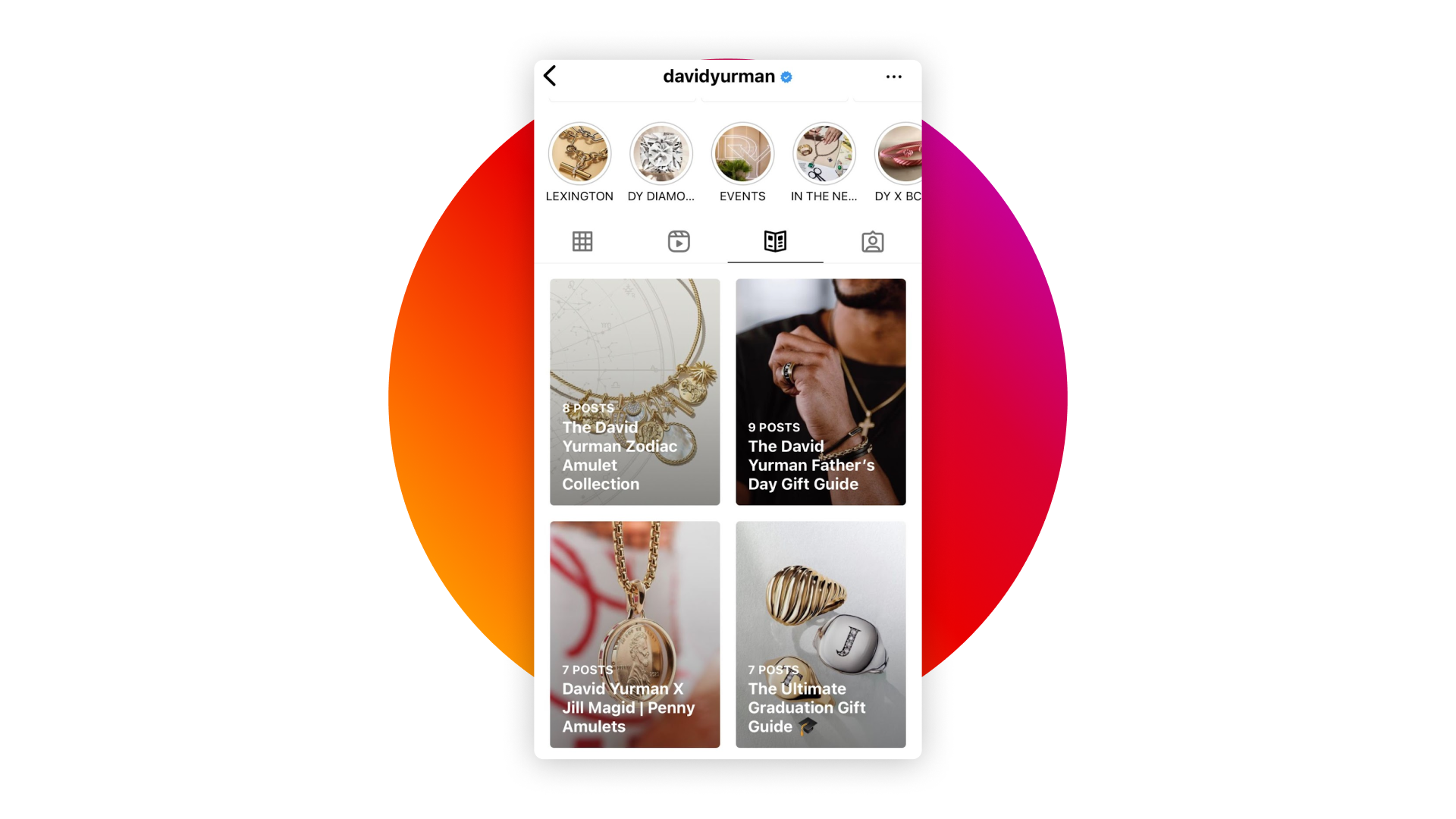
Walmart
Being the largest retail corporation, Walmart is also one of the most active adopters of social commerce, maintaining a presence on multiple social media channels. It was the first one to launch a live-shopping event on Twitter in 2021, as well as to adopt Twitter Shops — a feature that allows an account to spotlight up to 50 products for its followers. The brand also has a dedicated Walmart Help Twitter account that answers customer requests 24/7. The corporation partners with a large pool of influencers on Instagram, TikTok, and YouTube who recommend its products via affiliate links. However, the retailer aims to bring social media engagement even further, having filed trademarks for “Walmart Creator” and “Walmart Creator Collective” that would provide social media consulting and promotion of goods and services of others through influencers in the summer of 2022.
YNAP
Yoox Net-a-Porter Group is one of the leading fashion digital retailers. The company was one of the first to partner with WhatsApp to test the messaging platform’s new features for providing a personalized experience to high-value customers. For example, the company’s Personal Shopping team uses WhatsApp to send customers product suggestions and complete transactions instead of emails. The team also uploads items as status updates, which allows customers to have a real-time shopping experience and comment directly on the items shown. To evaluate customers’ feedback, YNAP integrated its Order Management System with WhatsApp via the platform’s Enterprise solution, which is also used to send order updates through the platform.
Domino’s Pizza
With a global presence in over 83 countries, Domino’s Pizza strives for the same dominating position when it comes to different channels for customer interactions. The company knows that pizza is often ordered on a whim, and what is a better place to buy something on a whim than a messenger that people open 20 times a day? The company employs chatbots to allow customers to make orders through messaging platforms, such as WhatsApp and Facebook Messenger. For a returning customer, ordering via Domino’s chatbot gets astoundingly easy: not only it remembers their address, but if a person has set a favorite pizza in their profile, all it takes to make an order is sending a dedicated emoji to the bot. Mind-reading is likely to be the only easier ordering option in the future, but that’s a whole other story!

Social commerce tips & best practices
Social commerce is a multifaceted activity and successful campaigns often include engaging with customers through multiple social media channels and employing several approaches. Every brand and its digital marketing strategy differ, nonetheless, here are some of the universal tips for mastering social media selling.
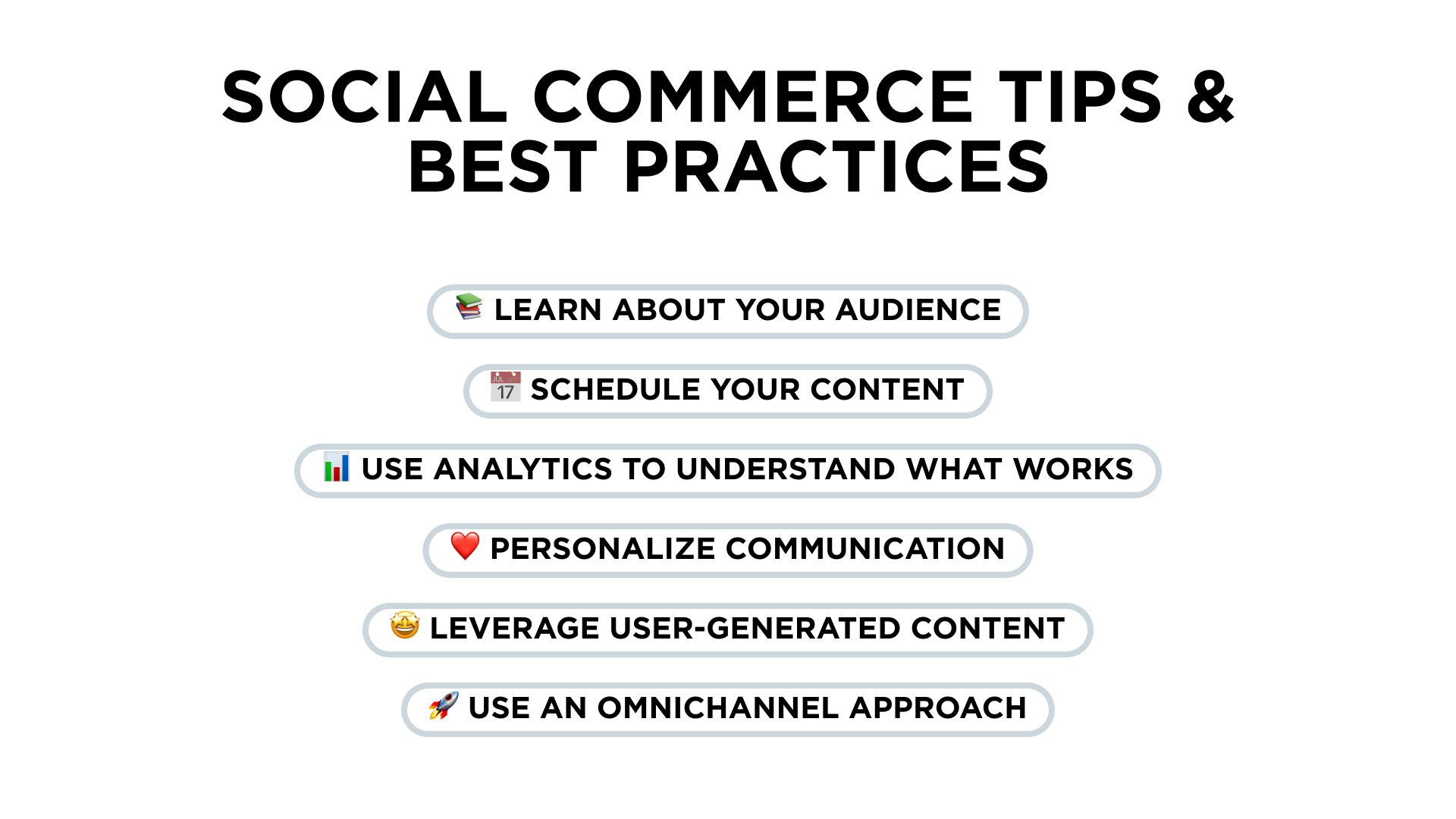
- Learn about your audience. For maximum engagement, align your social commerce strategy with your target audience. Choose products and messaging based on the data gathered across social media channels and create content that resonates with the audience of a particular platform.
- Schedule your content. You have to have a plan to be successful and social commerce is no exception. Align your social media activity with festivities and relevant events to maximize engagement. Also, schedule some promotional posts, such as unpackaging videos or close-up shots, after you’ve shared a listing to generate interest and drive traffic to the new social storefront.
- Use analytics to understand what works. Devising a social commerce strategy based on assumptions only is not worth the risk. Precise figures, including customer demographics, the conversion rate for various campaigns, and engagement rates for different types of content, should helm the direction of your social selling efforts, determining the best social media channels and approaches.
- Personalize communication. The majority of customers expect brands to know their preferences and respond much better to personalized offers. Social media and messenger selling is a great opportunity for brands to engage in direct two-way communication with customers, make personalized offers, and improve long-term relations with them.
- Leverage user-generated content. Communities play an important role in social media e-commerce. The effectiveness of advertising campaigns and partnering with celebrity influencers often pales in comparison to how some accidentally gone viral content can do to sales. For brands, it is important to monitor social media for mentions of it and promote brand advocates through reposts, personal discounts, or even complimentary products.
- Use an omnichannel approach. To extend its reach, a company should aim at being equally present across several most important social media and messenger platforms. The growing number of such platforms makes it difficult to communicate across them all in a timely and personalized manner.
5 reasons why you should try social selling
As you can see from the above, social commerce is already used by many companies and brings noticeable results to many of them. If your company hasn’t started social selling yet, here are five main reasons why it should.
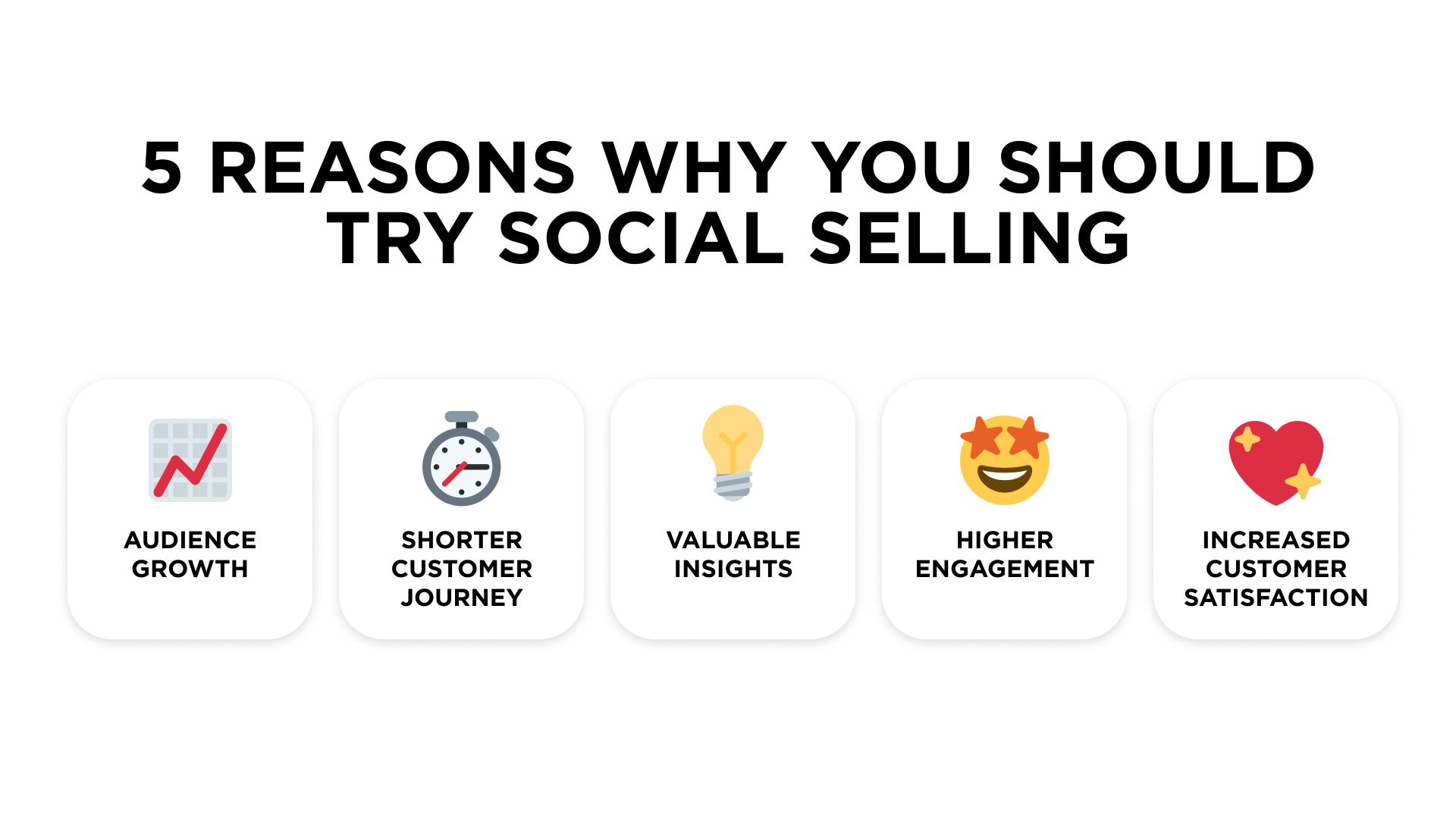
Audience growth
Social media and messengers are where billions of people communicate with each other every day. These channels provide brands with numerous opportunities to market and sell their products and services in a new way — by participating in a conversation with customers. Engaging content created by both companies and individual users transforms into a blend that overpowers traditional marketing and advertising.
Shorter customer journey
Social shopping can attract even those customers who are generally reluctant to register on new websites or have no time to go through onboarding processes in e-stores. Optimized and streamlined shopping via social apps is likely to bring new loyal customers to a company and produce a long-term sales increase.
Valuable insights
Platforms that provide social shopping features also come with convenient dashboards to track every interaction and sale. This provides valuable and easy-to-use data to analyze customer preferences, demographics, and interests. All of this can be used to optimize marketing strategy, brand positioning, and activity on every social media channel.
Higher engagement
People enjoy using social media and many of them are happy to discover that their favorite brand has an active Instagram account where they can actually shop for products they love. Social selling sets up the ground for new potential forms of engagement between brand and customers, from a photo of a recent purchase tagging a company to some viral tweet that hits the news feed.
Increased customer satisfaction
Social commerce doesn’t end when a buyer hits the ‘Checkout’ button. On the contrary, both messengers and social media are great communication tools to stay in touch with customers. For example, what can be more convenient for a buyer to contact support via the same channel they made a purchase in and receive a prompt personalized response? This way, social selling through the mentioned above channels can also improve customer satisfaction, which is a key performance indicator for virtually any business.
Conclusion
Social media and instant messengers hold a potential of great value that is still being discovered by brands of all sizes and industries. The growth in popularity of social selling is likely to keep strong as social media platforms expand their functionality and such cutting-edge technologies as AR and AI-bots become more widespread.
In the near future, social commerce is likely to become a staple in sales and marketing, and brands that realize it earlier have all the chances of winning a larger and more loyal audience than their competitors.One thing that is intrinsically woven into social commerce is its multi-channel character. Customers expect that a brand shoppable on Instagram can also be easily reached via Facebook and so on. Here, omnichannel messaging platforms, such as Umnico, can help tremendously to streamline and optimize customer communication. For those who are still unsure about the benefits of social selling across multiple channels via a single easy-to-use interface, a free trial period allows them to try all Umnico’s features for free.
You might be interested in similar topics
What is Conversational Marketing (Its Strategy, Benefits, and Examples)?
Emotional marketing and how to employ it properly
Real-Time Marketing: How to Use it Effectively

Subscribe to Umnico news!
Be the first to get recommendations and up-to-date information
